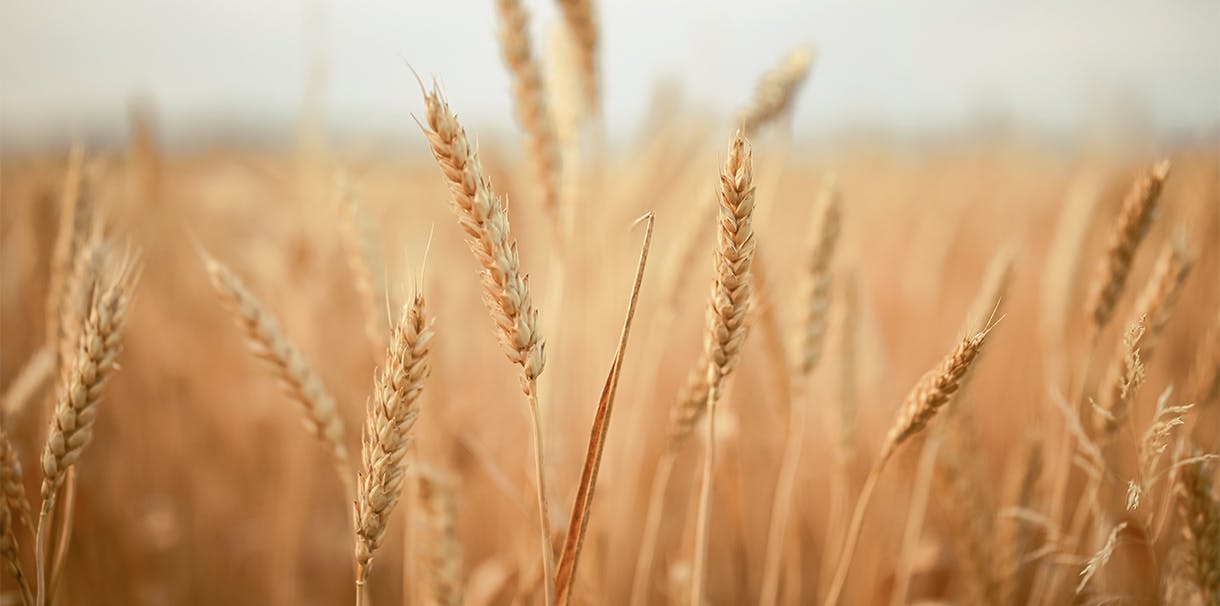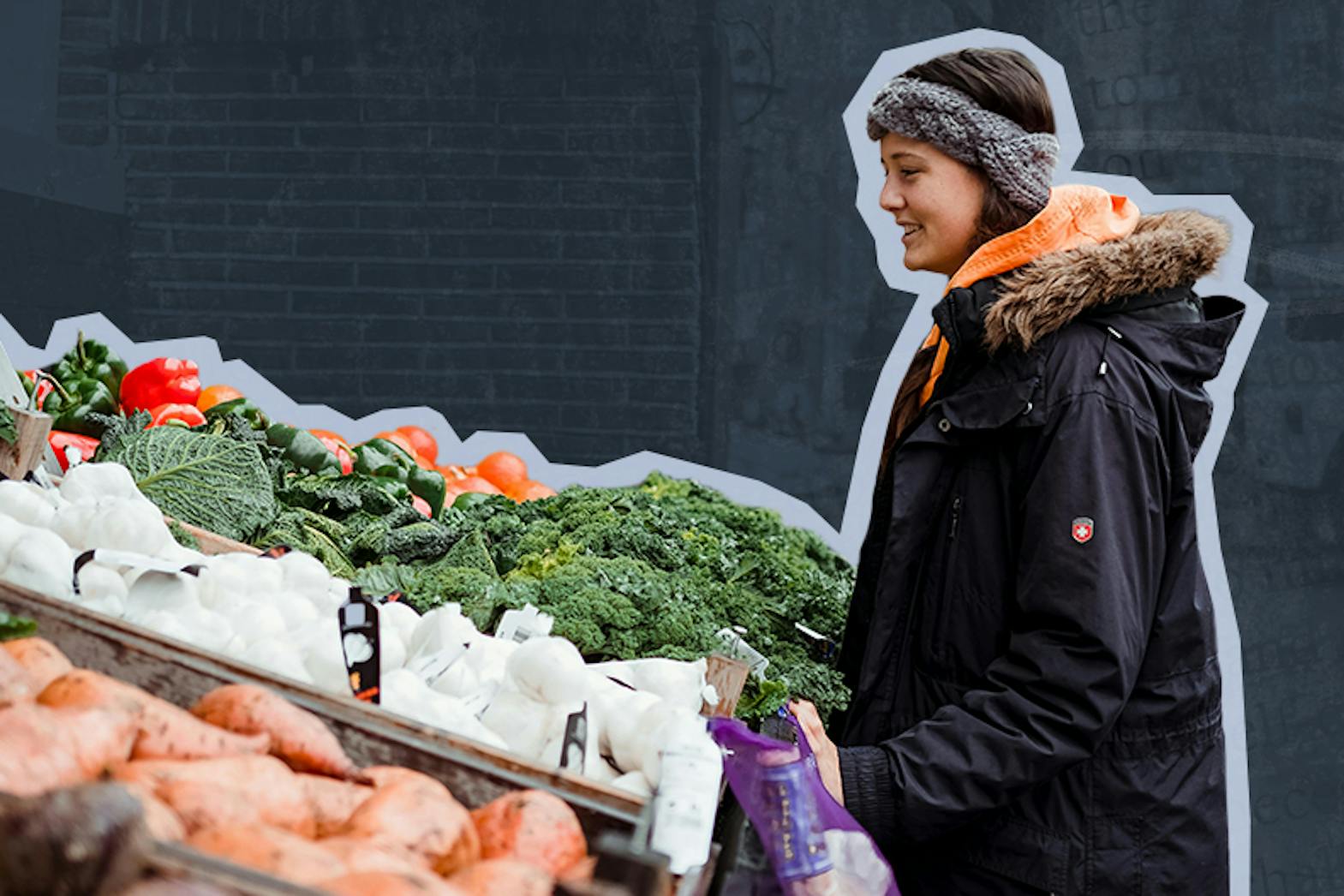Food sovereignty means communities are in charge of how their food is grown, shared, and sustained, a direct path to addressing food insecurity at its roots. As inequality grows, so does hunger; food sovereignty offers a way to rebuild fairness, resilience, and local control.
In Canada, this vision feels both urgent and within reach. We import and export huge volumes of food, yet many families still go hungry and entire communities struggle to access healthy, affordable options. Farmers face rising costs, Indigenous communities face systemic barriers to traditional foods, and the power to shape our food system sits increasingly in the hands of corporations and investors rather than those who grow and harvest.
Planners (of all kinds) have a role to play: the way we design communities and manage land directly affects how food moves, who has access to it, and how resilient our systems are when the world changes. This wish list offers a starting point: a set of policy directions that won’t solve every issue tied to food insecurity, but that move us toward a more just, sustainable, and locally grounded food system — one rooted in sovereignty, not scarcity.
Building Food System Resilience
In recent years, Canada’s fragile food system, one that has us importing and exporting over half of our food, has left us exposed to trade wars, global supply chain problems or climate change-induced crop failures. The goal is simple: a food system that can feed people here at home, even when the world gets shaky.
Policy needs to…
- 1
Strengthen Canada’s supply-management programs by prohibiting the removal of protections in trade negotiations.
- 2
Expand successful supply management models (dairy, eggs, poultry) to other staples via quota/price supports/buffer stocks.
- 3
Make food trade transparent and resilient by enforcing clear origin labelling and requiring every trade agreement to assess its impacts on domestic food security and local markets.
- 4
Rebalance trade subsidies towards domestic food production (versus the current export crops).
Planning for New Foodways
Planning plays a key role in how land is used, shared, and cared for, yet food systems have often been left out of that conversation. Today, planners have an opportunity to reimagine how food fits into our communities, recognizing that land use, zoning, and environmental plans shape who has access to farmland, fishing areas, forests, and the spaces where food is grown, gathered, and shared. To make this possible, we must empower planners with the tools and policies needed to make food sovereignty a real part of community design.
Policy needs to…
- 1
Recognize foodways as an essential part of our infrastructure that should be planned for in official community plans and zoning bylaws. This goes beyond just grocery stores and farms; it includes food hubs, harvest areas, trading posts and shared cooking spaces.
- 2
Protect and designate land for local food production, community gardens, greenhouses, and traditional harvesting areas through zoning and land use policies. Integrate food sovereignty goals into environmental and climate plans to support local growing, seed saving, and habitat restoration.
- 3
Provide training and resources for planners to engage meaningfully with Indigenous Nations, farmers, and harvesters when shaping land policies.
- 4
Prioritize access to land for food and support co-management models with Indigenous governments through provincial and federal planning guidelines.
Promoting Fair Competition in the Food Supply Chain
Canada’s grocery shelves may look full, but real choice is shrinking. Five corporations control over 80% of Canada’s grocery market, leaving little room for independent grocers, co-ops, or local producers. When so few players dominate, prices rise, and small food businesses struggle to survive. A fair food system depends on creating a just, more diverse food system where no single company can control what we eat or what farmers earn.
Policy needs to…
- 1
Strengthen federal and provincial competition laws closer to the EU model to prevent mergers that reduce consumer choice or limit access for small suppliers.
- 2
Improve transparency in pricing and contracts between large retailers, distributors, and farmers to prevent unfair mark-ups and “greedflation.”
- 3
Support independent and cooperative food retailers by expanding public investment, tax incentives, and low-interest loans for local markets, shared logistics hubs, and regional distribution networks that shorten supply chains and keep profits within communities.
- 4
Adopt principles-based food safety and trade regulations that remove unnecessary interprovincial barriers and make it easier for local producers to sell across provinces and territories, while preserving protections for workers and the environment.
- 5
Develop a national grocery code of conduct that ensures fair dealing across the supply chain.

Supporting Reconciliation and Food Justice
Food justice begins with recognizing that Indigenous Peoples have managed lands and food systems sustainably since time immemorial. Yet, many communities still face barriers to accessing traditional foods and managing their own resources. True reconciliation means more than acknowledgment: it means sharing power, returning control, and ensuring the Calls to Action from the Truth and Reconciliation Commission are reflected in everyday policy. Reconciliation begins with supporting Indigenous sovereignty in managing resources and foodways, and ensuring equitable access to healthy, culturally meaningful food across the North and beyond.
Policy needs to…
- 1
Work in true partnership with Indigenous Nations and organizations to co-develop long-term strategies, including reforms to Nutrition North Canada and community infrastructure planning, that strengthen food sovereignty. These efforts should address the real cost of food, expand support for community-led harvesting and food programs, and close gaps in housing, transportation, and broadband so every community has the foundation for sustainable, self-determined food systems.
- 2
Embed reconciliation and community benefit goals into the federal Critical Minerals Strategy, ensuring resource development includes investment in local infrastructure, education, and food systems.
- 3
Improve the Northern Residents Deduction (NRD) to better reflect the real costs of living and eating in northern and remote communities.
- 4
Support Indigenous-led land access and food sovereignty initiatives that return stewardship authority to communities and make traditional foodways truly accessible.
- 5
Fund community-based liaison representatives to connect remote, Indigenous, and northern communities with available funding programs and facilitate knowledge sharing across regions.
Agriculture Sector Restructuring
Farming should be a way to build a life, not a lifetime of debt. The average Canadian farmer is 56, and new entrants face steep land prices and limited access to credit, while rising input costs and land speculation squeeze small and mid-sized producers as corporate investors capture most of the profits. To build a sustainable future, we must work together to restructure agriculture so that farmers, not financiers, reap the rewards of their work, and the land remains accessible to future generations.
Policy needs to…
- 1
Reform agricultural finance programs to prioritize new, young, and equity-deserving farmers, including Indigenous, Black, and other underrepresented producers, by expanding low-interest loans, land trusts, cooperative ownership models, and intergenerational programs that help retiring farmers pass land to new entrants rather than investors or corporations.
- 2
Curb farmland speculation and absentee ownership by discouraging land held primarily for investment or profit extraction, while protecting lands used for community-based, ecological, or traditional foodways. Tools could include progressive land taxes on speculative holdings, stronger limits on non-farming investors, and support for community land trusts that keep farmland and stewardship lands accessible for future generations.
- 3
Rebalance agricultural subsidies and supports toward small and mid-sized farms that use regenerative or climate-smart methods, while strengthening local processing and distribution infrastructure so farmers capture more value from their products instead of losing profits to middlemen and global buyers.
- 4
Modernize food and farm regulations to make them principles-based rather than prescriptive, reducing interprovincial barriers that disadvantage small and medium-sized producers while maintaining high standards for worker safety and environmental protection.
Food sovereignty offers a vision of the future where communities lead, ecosystems thrive, and everyone has a stake in the food that sustains them.
By centering our view of food in this way, we can rebuild food systems that are just, resilient, and rooted in relationship. Getting there will take collective action from planners and governments to growers and eaters, working together to build food systems rooted in respect, justice, and care for the land.




